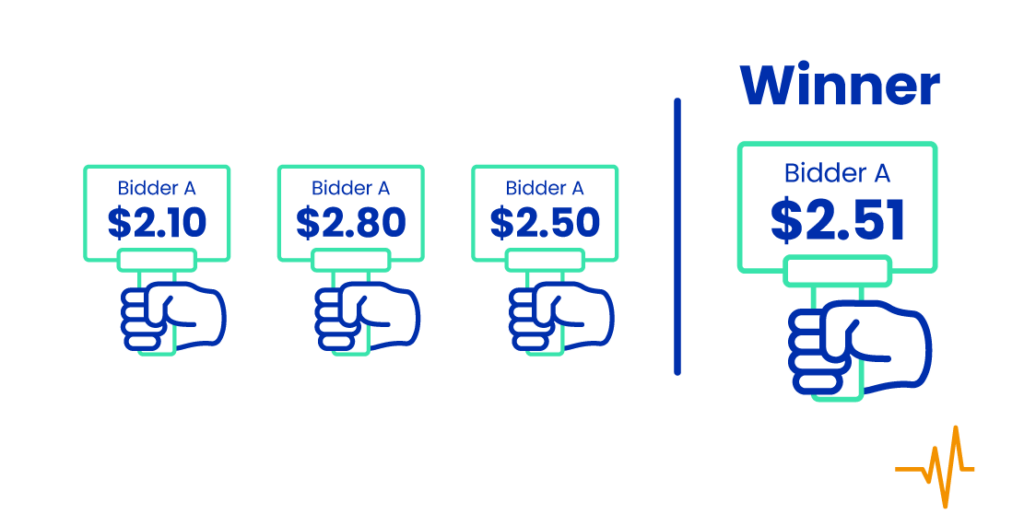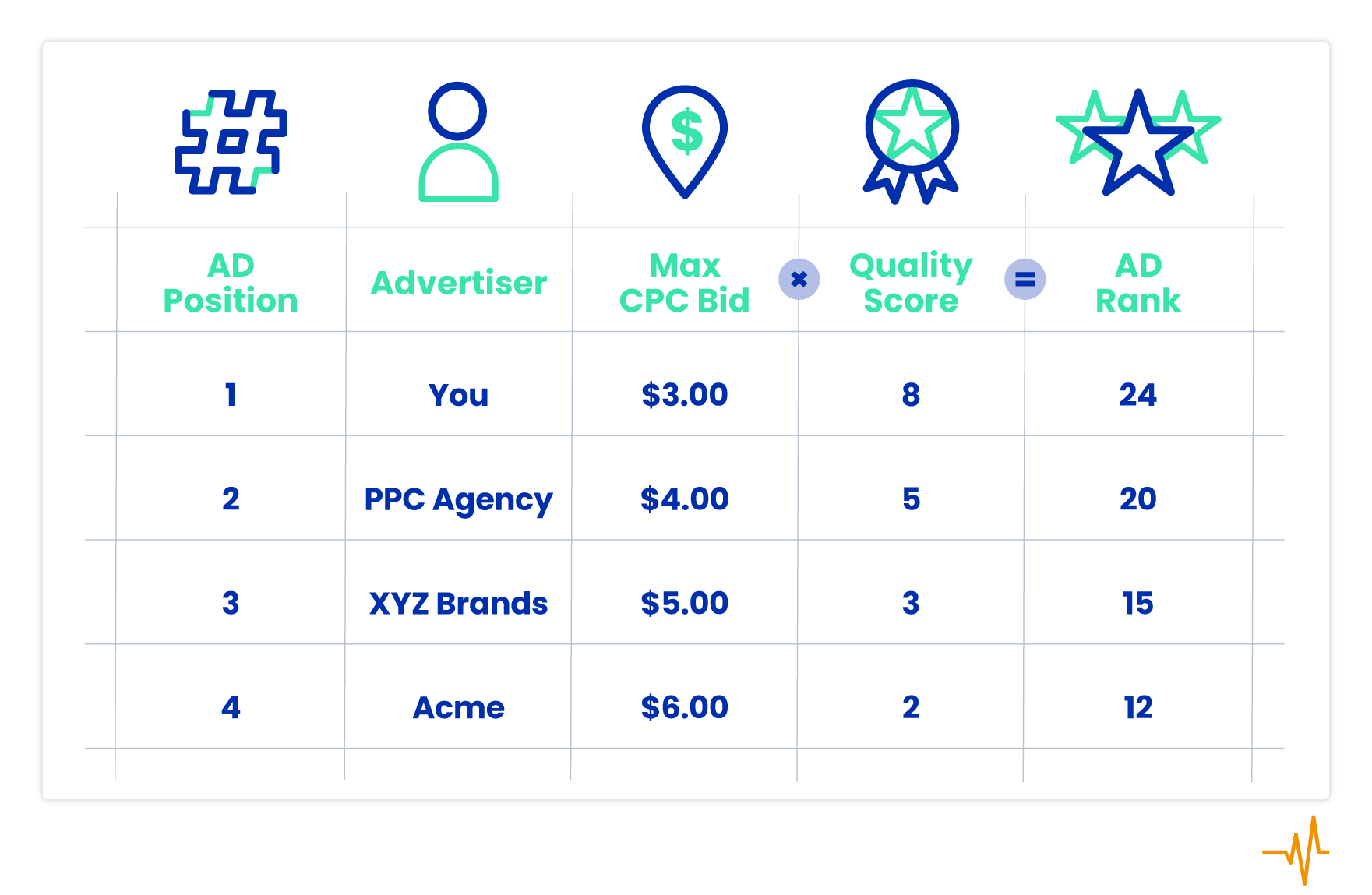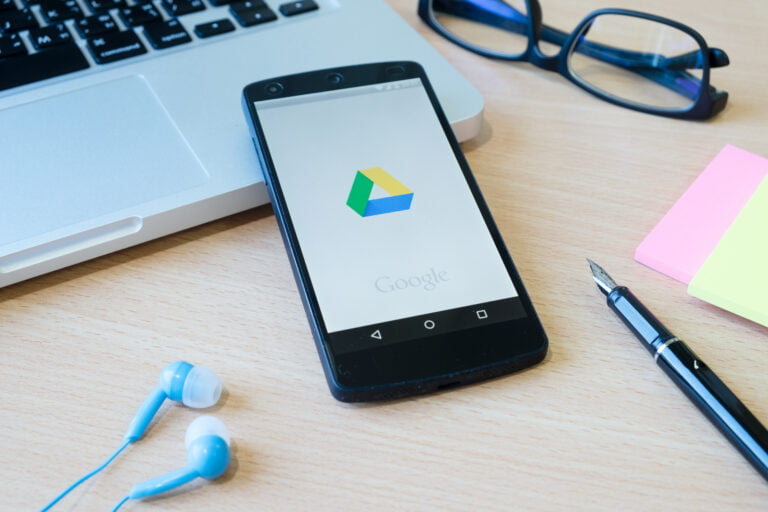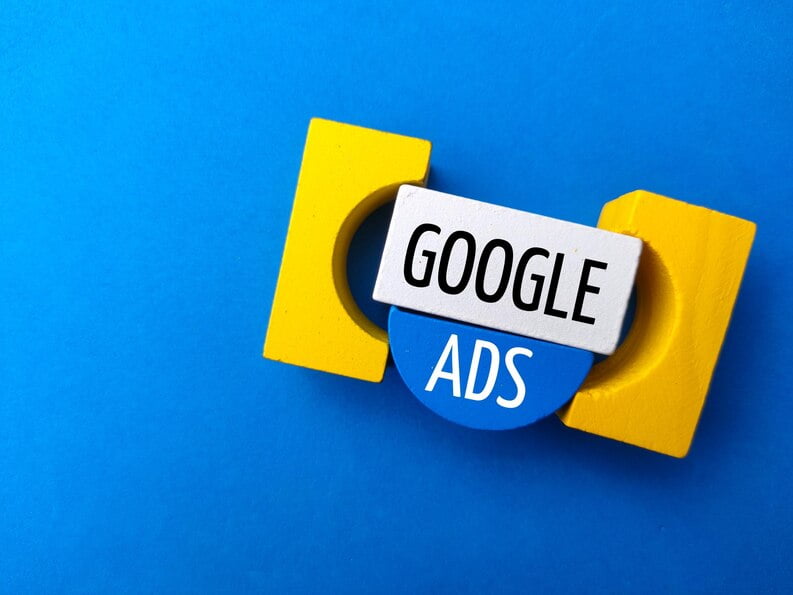Staying ahead of the competition, especially in today’s fast-paced digital advertising landscape, is crucial for maximizing the performance of your Google ads campaigns.
The number of bidding strategies available in Google Ads is a lot and it keeps changing. Even though there are three categories of bidding strategies in Google Ads, each of them has different types which serve to different objectives and outcomes.
Among these bidding strategies, Automated Bidding stands out as a powerful tool that streamlines the bidding process, optimizes ad placements, and enhances overall campaign efficiency.
This is also the direction Google is going as well as other advertising platforms.
In this blog post, we will delve into the key benefits of automated bidding in Google Ads, exploring its various types and benefits.
It is important to understand how they work in order to maximize your campaign’s performance.
Whether you are new to Google Ads or an experienced marketer, details we share in this article can take your ad campaigns to new heights. 🚀
✨ We will breakdown the automated bidding strategies and their benefits. But, first, let’s explain some key terms and processes regarding to this topic.
Getting started with Google Ads Bidding Strategies
If you’re not sure which bidding strategy is right for you, you can always start with the Maximize clicks strategy, which is an automated bidding strategy. This enables Google to optimize your bids based on wide range of contextual signals and advanced machine learning.
- Start with a small budget so that you can optimize your budget spent and minimize your risk of wasting it. This gives you time to learn and improve your campaigns as well as finding the best strategy.
- Monitor your results so that you can optimize your campaigns. This includes adding / excluding keywords or trying different keyword match types.
- Once you get enough data and a stable campaign going on. You can always experiment with different strategies and campaign types. This is the best way to find out what works best for your business.
What is Bidding in Online Advertising?
Bidding in online advertising is the process of setting an amount that you are willing to pay for a click or a thousand impressions (CPM) on your ad.
Through bidding process, advertisers compete for ad placements on digital platforms such as search engines, social media, and etc. When a user initiates a search, visits a webpage, or engages with digital content, ad space becomes available for advertisers to display their ads.
Based on where user initiated the journey (google.com, YouTube or an publisher website), an ad in text, image or video format is served to user in the available ad slots; such as search engine result page (SERP), or a banner ad on a website.
How Bidding Works?
Bidding in digital advertising works through a real-time auction process, where advertisers compete for ad placements. The advertiser with the highest bid and the most relevant ad typically secures the ad placement.
The winner of the auction is determined based on several factors, including bid amount, ad quality, and relevance.
What type of auction is used by Google?
Google Ads uses a second-price auction system. It means what you pay is determined during the auction.
As the auction is dynamic, the actual cost per click (CPC) you pay is calculated in real-time.
This is also usually accepted and mostly used bidding type in which each bidder places a bid, the highest bidder gets the first slot and pays the price bid by the second highest bidder plus 0.01$.
You can see how much winner pays in the example below:

 Second-price auction system encourages advertisers to submit bids that reflect the actual value they place for the ad placement and provides an incentive for advertisers to create high-quality, relevant ads to users or prospects.
Second-price auction system encourages advertisers to submit bids that reflect the actual value they place for the ad placement and provides an incentive for advertisers to create high-quality, relevant ads to users or prospects.
In Google Ads, there are several factors that can influence bidding:
- Budget (Your Bid)
- Targeting Parameters (Device, Location and etc.)
- Ad Quality (Ad Relevance & Landing Page Experience)
- Ad Format and Placement
- Time and Day of Week
- Competition
Based on all these factors, Google Ads decides which ads to serve and how much to charge for each click.
If you’ve understood what is bidding and how second-price auction works so far, we can now move to Google Ads’ automated bidding strategy and its benefits.
You can read more here about Google Ads bidding basics and Auction from Google’s articles.
In Google Ads, there are main 3 bidding strategies:
- Smart Bidding
- Manual Bidding
- Automated Bidding
Google Ads Smart Bidding Strategy
It is a subset of automated bidding strategies that use Google’s artificial intelligence to optimize for the desired results in the auction.
This means that your bids will be adjusted by Google’s AI based on wide range of contextual signals and advanced machine learning to help you achieve your campaign goals.
You can tie this campaign goal to a business goal and select your Smart bidding strategy accordingly. You can refer to table from Google:
Business goal | Campaign goal | Smart Bidding strategy |
Increase sales or leads | Get as many conversions as possible at a fixed budget or fixed ROI | Maximize conversions, Target CPA |
Increase profit | Get as many conversions as possible at a fixed budget or fixed return on ad spend (ROAS) | Target ROAS, Maximize conversion value |
Google Ads Manual Bidding Strategy
Manual bidding is when an advertiser sets the maximum amount that they’re willing to pay for each click on a keyword or an ad slot (display placement).
The main advantage of manual bidding strategies is that they give advertisers more control over their budget and allow them to adjust bids on specific keywords.
The downside is that manual bidding can be time-consuming and prone to human error. Plus, it might be difficult to keep track and stay on top of changes in the market fluctuations. So, you may be missing some great opportunities while keeping your bidding at a certain level.
That’s where automated bidding comes into play.
Google Ads Automated Bidding Strategy
Automated bidding strategies leverage Google’s machine learning to set bids for your ads. You don’t need to manually update bids for specific ad groups or keywords.
As its name suggests, automated bidding sets bids automatically based on the outcome you expect. Don’t worry, there are several automated bidding strategies which serve almost all your business needs.
Rather than manually setting bids, advertisers rely on Google’s algorithms and machine learning to adjust bids dynamically and Google (as expected) dynamically determines bid amounts based on the likelihood of your ad generating clicks or conversions.
We will repeat the phrase “algorithms and machine learning to adjust bids dynamically” throughout this content frequently, so hold tight! 😊
(PS: Not for on-page SEO purposes but for the sake of topic itself)
Why Automated Bidding Strategies?
I hear you asking…
The key benefit of adopting automated bidding strategies, is that it enables your campaigns to respond to changes like; user behavior, device, location, browser, competition, and other factors that influence ad performance.
The second most important benefit is for the Google Ads Experts: Google Ads automated bidding handles the manual work of adjusting CPC bids manually since Google Ads automatically adjust bids for you.
Let’s not forget about the fact that Google holds the most information about its users, so letting Google adjust bids according to fluctuations in market, is a good choice in most cases.
So, this strategy, basically, saves you tons of time and effort whilst keeping your bids competitive!
Here are the automated bid strategies in Google Ads that we’ll cover:
- Maximize Clicks
- Maximize Conversions
- Maximize Conversion Value
- Target Impression Share (Search Campaigns only)
- Target CPA
- Target ROAS
- Viewable CPM (Display Campaigns only)

Manual Bidding vs Automated Bidding
Between these 2 bidding types on Google Ads, there are different cases where advertiser can benefit from both in different scenarios and for different business goals.
As forementioned, such automated strategies in advertising is the direction that Google is moving towards as well as the entire advertising world, especially with the popularization of artificial intelligence.
Maximize Click
Maximize Clicks is a bidding strategy in Google Ads that aims to generate as many clicks as possible within a given budget. It uses machine learning to determine the optimal bid for every ad auction.
Goal: This strategy is ideal for businesses that want to increase website traffic or to maximize the ad’s exposure to the target audience for brand awareness.
Use Cases: Maximize Clicks is particularly useful for new accounts where you don’t have historical data and ready to explore market and new audiences.
It can also be used during promotional periods, and for driving traffic to content-based websites, blog posts, or when seeking to generate interest in a new product or service.
- Driving website traffic
- Increasing brand awareness
- Promoting content or offers
- Expanding new audiences or markets (broader audience)
Benefits: The benefits of maximize click bidding strategy are:
- Increased clicks (Captain obvious 🦸🏼)
- Time-saving: Maximize Clicks is an automated bidding strategy, which means that it saves time and effort that would otherwise be required to manually adjust bids.
- Cost-effective: By optimizing bids to maximize clicks, advertisers can efficiently utilize their given budget with maximum number of clicks.
- Easy to set up: Setting up Maximize Clicks is rather simple. It requires minimal input from the advertiser, making it a great starting point for those new to automated bidding.
Maximize Conversions
Maximize Conversions is a great option for advertisers who want to drive more sales or generate leads. It is an automated bidding strategy, so it automatically adjusts bids to maximize conversions.
Just like in maximize clicks, this strategy utilizes machine learning algorithms to adjust bids in real-time; however, maximize conversions strategy targets users who are more likely to complete the desired conversion action, such as a purchase, signing up for a newsletter, or filling out a contact form.
Goal: The primary goal of Maximize Conversions bidding strategy is to increase the number of conversions. It’s the best choice for advertisers who want to drive more sales or leads from their website and want to maximize the return on their ad spend by optimizing for conversions.
Use Cases: Maximize Conversions strategy’s primary goal is to increase the number of conversions. It’s particularly great for advertisers who want to drive more sales or leads from their website.
Maximize Conversions is beneficial for following objectives:
- Drive Sales
- Generate Leads
- Get Demo Requests
- App Downloads or in-app Conversions (mobile)
Benefits: The benefits of maximize conversions bidding strategy are:
- Increased Conversions
- Saves Time: Maximize Conversions is an automated bidding strategy, so it saves time and effort by adjusting bids automatically.
- Automated Optimization: It automates your bids to reach users who are more likely to convert.
- Budget Control: You can set a target CPA (cost per acquisition) with Maximize Conversions bidding.
Maximize Conversion Value
Maximize Conversion Value is a great option for advertisers who want to drive more revenue or maximize the value of their ad spend.
Goal: This strategy is ideal for businesses that want to maximize their return on investment (ROI).
Use Cases: Maximize Conversion Value bidding strategy can be used with any conversion goal, including leads, sales, phone calls, and app installs. But it is particularly beneficial for e-commerce websites, online retailers, and service providers with varying conversion values.
This bidding strategy can be used for:
- Lead Generation: Maximize Conversion Value bidding can help you to achieve lead generation goal by ensuring how much you are willing to pay per conversion.
- Sales
- E-commerce
Benefits: This automated bidding strategy aims to maximize the total conversion value (revenue) of your ad campaign within your specified daily budget.
- Better Conversion Value: By using machine learning to optimize bids based on conversion value, Maximize Conversion Value helps you generate more revenue within your budget.
- Revenue Growth: Maximize Conversion Value focuses on high-value conversions, meaning an increase in the total revenue generated from your ad spend.
- Efficiency: The strategy automates bid adjustments in real-time, ensuring that your bids are optimized to achieve the maximum conversion value.

Target Impression Share
Target Impression Share bidding strategy is designed to help advertisers achieve a specific level of visibility for their ads on the search engine results page (SERP) or display network.
This strategy focuses on getting a set percentage of impression share which your ads receive compared to the total number impressions available for your keywords in any given auction.
Here’s an overview of its goal, use cases, and benefits:
Goal:
Primary goal of this bidding strategy is to help you maintain a desired level of visibility for your ads. And of course, it comes with a cost. Costs of results is likely to be higher than your regular costs because you aim for a more favorable and a higher ad placement.
For instance, you can set your desired impression share, such as 70%, and Google Ads will automatically adjust bids to achieve that goal.
This means whenever your ads are eligible to be displayed, they’ll appear on top of SERP by 70% as often as your budget allows, and the remaining 30% will be displayed at the different sections on SERP.
Use Cases:
This strategy is suitable for mostly awareness objective, in competitive industries, or specific keywords where maintaining ad visibility is crucial.
Target Impression Share bidding strategy is designed for getting you a higher visibility on SERP and visibility of your ads rather than the number of clicks or conversions. If that’s suits your needs then, this bidding strategy is right one for you.
Benefits:
You can use this strategy to ensure that your ads appear at the top of the page or at a specific section of the page. This enhances your brand visibility and increases the likelihood* of clicks.
- Enhanced Visibility: The strategy ensures your ads are prominently displayed at the top section of SERP, thus increasing brand visibility and exposure to your prospects. A great use case of this is when you launch a new product.
- Control Your Ad Position: You can set a target location for their ads, such as the top of the page or absolute top, to control where their ads appear in search results or on the display network.
- Brand Awareness: It is ideal for branding campaigns because it allows your brand to remain in the spotlight and reinforcing brand recognition.
- Ahead of Competition: In highly competitive industries, maintaining a visible ad position can help your business stand out among competitors.
*Note: Higher impression share doesn’t necessarily guarantee more clicks or conversions, so monitoring the performance of your campaigns and adjusting your targeting, ad messaging, and landing pages as needed is crucial. This strategy works well in combination with other bidding strategies to ensure a well-rounded campaign approach.
Target CPA
CPA stands for Cost per Acquisition or Action.
This bidding strategy is designed to help advertisers optimize their campaigns to achieve a specific “acquisition cost” goal by using Google’s machine learning algorithms. It adjusts bids based on historical data and real-time signals to achieve the desired CPA.
Goal:
Target CPA bidding’s primary objective is to maximize conversion/acquisition at a given CPA. By using this strategy, marketers aim to deliver a desired volume of conversions within their budget.
Use Cases:
It is ideal if you’re looking to achieve a specific cost per conversion while generating a substantial number of conversions.
Target CPA is suitable for campaigns with defined conversion goals, such as lead generation, or form submissions. So, an accurate conversion tracking is essential for this strategy to work effectively!
Benefits:
- Flexible Control: Advertisers with limited budgets can benefit from it by ensuring their ad spend is allocated towards the most valuable conversions within their budget.
- Efficient Conversions: The strategy is designed to optimize for efficient conversions, ensuring you’re getting the most value out of your ad spend.
- Cost Efficiency: Advertisers can set a target CPA that aligns with their budget and business objectives, ensuring they maintain a profitable cost per conversion.
- Improved Volume: By targeting a specific cost per acquisition, advertisers can potentially increase their conversion volume while maintaining their desired cost efficiency.
Target ROAS
ROAS stands for Return on Ad Spend.
Target ROAS bidding strategy allows advertisers to optimize the campaigns based on a specific target ROAS.
You can set an ideal return on ad spend, and Google’s algorithm will automatically adjust bids accordingly to maximize the conversion value in accordance with the specified ROAS.
You should also consider the product margins, pricing, and other means of costs to set an appropriate target ROAS.
You need to set a realistic ROAS expectation from the campaign in order to get them running and served (getting impressions/clicks/conversions).
Pro Tip: You can of course expect a ROAS of 2, 3 or higher but if your ROAS isn’t realistic, this will provide enough liquidity for algorithm to go & bring the desired ROAS regardless.

How to Calculate ROAS
ROAS is calculated by dividing the revenue from your ad campaigns by the ad spend. The formula is as follows:
ROAS = (Revenue from Ad Campaigns) / (Ad Spend)
Let’s assume our revenue from this specific Google campaign is €1,600.
And we spent €900 for the campaign.
Our ROAS would be 1.600 ÷ 900 = 1.7
This means that for every euro we spent on the campaign, we generated €1.7 in revenue.
Goal:
Target ROAS bidding’s primary objective is to generate as much conversion value as possible while maintaining the specified target ROAS.
Use Cases:
It is well-suited for advertisers who aims to generate revenue and profits from their ad campaigns rather than clicks or impressions. You can allocate your ad spend towards high-value conversions and maximize the return on investment.
It is particularly effective for e-commerce brands with varying product margins or different pricing tiers.
Besides e-commerce brands, there are relevant use cases for B2B SaaS companies as well.
B2B companies use this strategy to generate qualified leads for their software solutions to attract higher-value leads that are more likely to convert into paying customers.
Use Cases for Target ROAS in B2B SaaS Companies:
- Lead Generation Campaigns
- Trial Sign-ups and Demos
- Subscription Acquisition
- Event Registrations and Webinars
- Upselling and Cross-Selling
If you know the lifetime value of a paying customer, you can set your campaigns to create positive ROI. However, you need to set, once again, realistic ROAS targets.
Benefits:
Automated Optimization: Automated process of this bidding strategy allows Google’s algorithm to uses historical data, machine learning, and real-time signals so that it can adjust bids dynamically.
Targeted ROAS Goals: In target ROAS bidding, campaigns focus on generating revenue and profitability. You can ensure that your advertising efforts generate a positive ROI.
Conversion Value Focus: The algorithm focuses to achieve the target ROAS and sets the bids based on historical data, user behavior, and contextual information.
Viewable CPM
For this strategy, let’s break down the term “Viewable CPM” itself into 2 and see what they mean: CPM and Viewable.
CPM stands for Cost-Per-Thousand Impressions. (An easy and common metric)
What is “viewable” then?
An impression is considered “viewable” when it meets specific criteria, which is hereby quoted directly from Google’s own article:

So basically, this bidding strategy focuses on paying for ad impressions that are considered viewable.
Because you’re getting more valuable impressions, vCPM cost is likely to be higher compared to your average CPM in the very same or similar campaigns with different bidding strategy than Viewable CPM.
Goal:
Viewable CPM bidding strategy’s primary goal is to ensure that your ads are displayed to your target audience users in a viewable manner as described by Google. This increases the likelihood of your ads’ visibility.
This strategy is particularly beneficial for brand awareness campaigns and offers enhanced visibility and control over ad viewability.
In this strategy, advertisers bid on a thousand viewable impressions and pay for impressions that are considered as viewable.
Use Cases:
Brand Awareness Campaigns: Viewable CPM is ideal for brand awareness campaigns, where the goal is to maximize the visibility of your ads to create brand recognition.
Engagement Campaigns: If your objective is to capture users’ attention and encourage engagement with your ad creative, Viewable CPM can help ensure that your ads are seen by users.
Video Advertising: For video ads, Viewable CPM is especially useful to ensure that your video content is viewed by users for a sufficient duration.
Benefits:
Viewable CPM bidding in Google Ads offers enhanced visibility by paying only for viewable impressions, boosts brand visibility to increase awareness, enables performance optimization through analyzing viewability metrics, and provides transparency and control over ad visibility.
Use cases of Viewable CPM bidding strategy include; brand awareness campaigns, optimizing ad placements for higher viewability, and tracking and improving ad performance through monitoring viewability metrics.
Pro Tip: Viewable CPM is effective for maximizing viewable impressions if that’s your goal, however, please remember that viewability doesn’t necessarily guarantee engagement or conversions.
You may not like it but he answer for this question is (the famous one):
“IT DEPENDS!” 😊
The best bidding option depends on your campaign goals, as well as your experience with Google Ads.
In order to understand and decide which bidding option is the best for your goals, you need to experiment with different bidding strategies and learn what works best for you.
Here are some additional tips for choosing the right bidding strategy:
- Your goals ➜ What are you trying to achieve with your Google Ads campaign? Do you want to generate more leads, increase website traffic, or boost brand visibility?
- Analyze results ➜ Look at your campaign performance to see what bidding strategies is working well for you and which one is not.
- Test ➜ After your analysis, you can try out different bidding strategies and see if they bring better results.
- Repeat 🔁
To set up automated bidding, you will need to create a new campaign or edit an existing campaign. Then, you will need to select an automated bidding strategy and set your budget and other settings.
Here are the steps on how to set up automated bidding:
- Go to your Google Ads account.
- Click on the "Campaigns" tab.
- Click on the name of the campaign that you want to set up automated bidding for.
- Click on the "Settings" tab.
- Click on the "Bidding" section.
- Select an automated bidding strategy.


